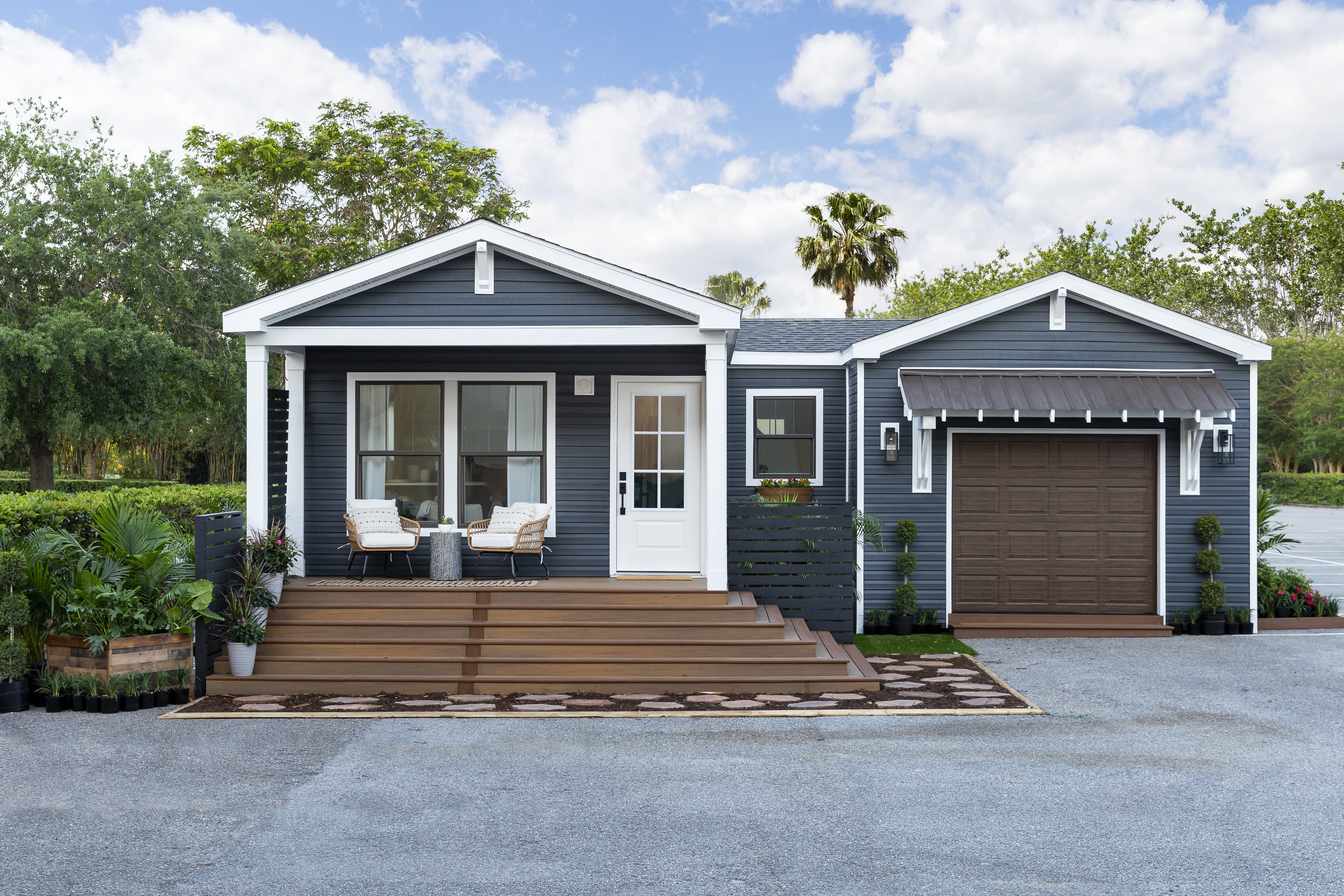
Freddie Mac has expanded its program for loans on real-property factory-built homes which have options in frequent with conventional homes like pitched roofs, connected garages and everlasting foundations.
The government-sponsored enterprise mentioned it’s now shopping for single-section CrossMod homes loans for the primary time, making it potential for debtors to get decreased charges for housing out there at cheaper price factors, with a 3% down fee possibility.
Freddie has bought generic real-property single-wides that meet Department of Housing and Urban Development manufactured-housing requirements. But the GSE beforehand restricted its CrossMod exercise to loans on multisection homes.
The enlargement within the sorts of Freddie Mac-financeable homes that meet the Manufactured Housing Institute’s CrossMod requirements provides to indicators of revived curiosity in factory-built models amid a scarcity of entry-level homes in lots of markets.
“Freddie Mac’s assist for contemporary single-section factory-built homes will play an vital function in creating and selling inexpensive housing,” mentioned Sonu Mittal, govt vp and head of single-family acquisitions at Freddie Mac, in a press launch.
How single-section CrossMod loans assist with affordability
The common conventional home tops $500,000 within the United States, in response to Freddie. Multisection CrossMods with land, which Freddie’s been funding for a number of years, common round $300,000. Single-section CrossMods with land often worth nearer to $200,000.
Without the storage, single-section CrossMods run round 1,000 sq. toes in dimension whereas the multisection equal is nearer to 1,600. CrossMods additionally require some vitality environment friendly options geared toward lowering among the longer-term prices of homeownership.
Making lower-rate financing out there for less expensive, modernized factory-built homes might not be a cure-all by way of the various entry-level provide challenges, together with supplies prices and coverage uncertainty, however it’s a step in the fitting route.
“Savings could also be obtained from improved know-how, use of AI, and fewer reliance on one-site labor, which will likely be in shorter provide,” mentioned Selma Hepp, chief economist of Cotality. “I agree that specializing in manufactured models would assist alleviate among the affordability challenges.”
But Hepp additionally famous that factory-built housing isn’t presently an enormous think about provide.
While right now’s stock could also be comparatively small, potential is large, with Freddie’s financing probably boosting a presently restricted provide of single-section CrossMod models by addressing “which got here first, the rooster or the egg” relationship between the homes and the loans.
Clayton Homes, which launched a mannequin for single-section CrossMods again in 2022, is hopeful it should open up the market that conventional homebuyers, Realtors and builders flow into in such a approach that it is going to be engaging to supply extra stock.
“It makes it a extra engaging improvement software to builders on the market,” mentioned Ramsey Cohen, who works in nationwide gross sales at Clayton Development Group.
A method to mitigate some zoning challenges
Another problem to inexpensive housing have been native housing laws, which may be appreciable.
Single-section CrossMods might handle these each by way of conforming extra carefully with conventional house options and by being extra prone to be accommodated on smaller heaps. Traditional house options additionally imply they’re extra similar to site-built for appraisal functions.
“It suits very properly for city infill initiatives, becoming current heaps the place they’re possibly vacant or a house must be torn down and brought out as a result of it is simply not livable. It can match that footprint,” Cohen mentioned. “If you are doing a ground-up improvement, the one part permits you higher density, as a result of they do not want as a lot house. So it is not only a worth level.”
Also, CrossMods are a type of manufactured somewhat than modular housing, so its requirements are overseen nationally by HUD, pre-empting some native constructing codes.
Part of a bigger development towards smaller, factory-built homes
Both HUD and Freddie’s regulator, Bill Pulte, have pushed to do extra in manufactured and modular housing as a approach of furthering the creation of inexpensive stock, and the non-public sector has taken discover too.
There has been buzz out there about Boxabl, a modular builder of small factory-built homes, and its plan to go public by way of a $3.5 billion Special Purpose Acquisition Company deal.
Freddie’s announcement has much less relevance to Boxabl in response to Tomo Mortgage Senior Vice President Emanuel Santa-Donato, who is also the corporate’s chief market analyst.
“Freddie Mac’s enlargement applies solely to HUD-code manufactured homes, together with single-section models. It doesn’t apply to modular homes like these constructed by Boxabl. Modular homes are regulated on the state stage, not by HUD, and are already handled like site-built homes within the mortgage system,” he mentioned in an e mail.
The small dimension of the loans for Boxabl homes, which have been base priced beneath $100,000 in some circumstances, might nonetheless make financing them difficult. Large loans provide extra engaging economics for lenders and a few shrink back from these beneath a sure dimension.
However, others worth small starter homes as a method to acquire clients that may transfer on to greater properties later.
While the manufactured housing market Freddie Mac is increasing into stays comparatively small, it has proven indicators of short-term momentum over the previous 12 months.
“Manufactured homes accounted for roughly 10% of all new single-family housing begins as of late 2024, with over 42,000 homes constructed within the first 5 months of 2024 alone, up practically 20% year-over-year,” Santa-Donato mentioned.
“For many homebuyers priced out of conventional choices, this shift opens up one of many few remaining paths to inexpensive homeownership,” he mentioned.


